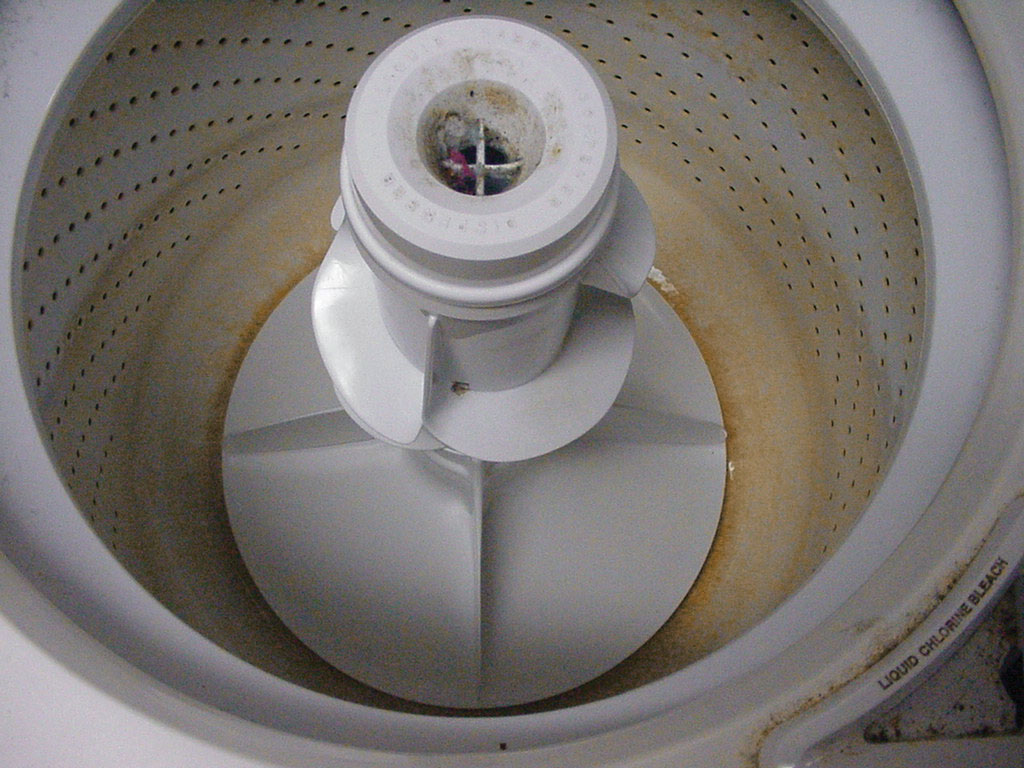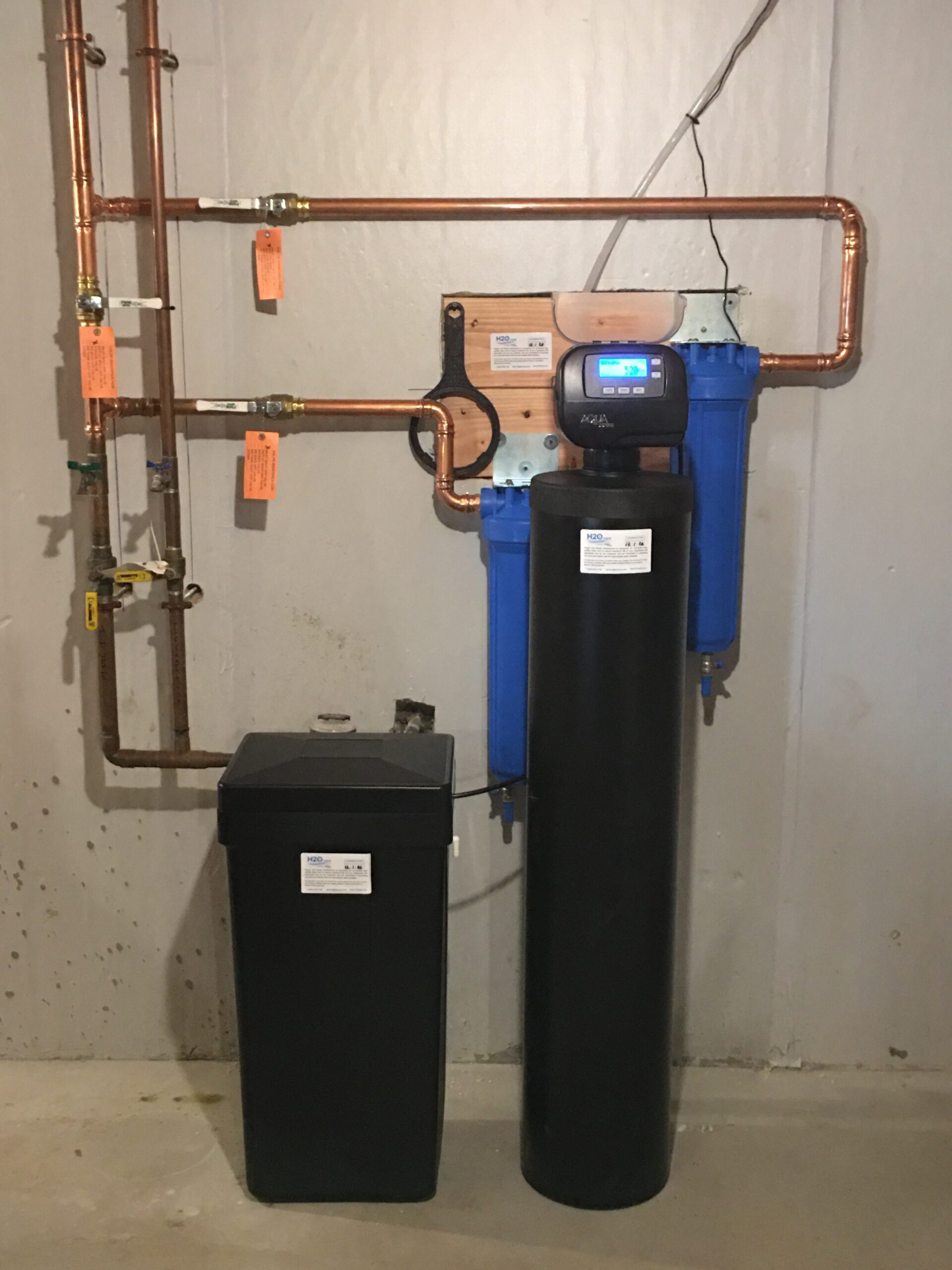Iron & Manganese in Water: Causes & Treatment
Iron and manganese are common minerals found in New England water supplies. While not considered health hazards, these minerals can cause staining and destroy piping throughout your home. If you have a private well or your town’s water supply is from wells, you may experience this water quality issue.
If you’re looking to filter out iron or manganese from your water, H2O Care can help! Contact us today to book a free water analysis.

Common Signs of Iron & Manganese in Water
You might have iron or manganese in your water if you notice
- Orange/reddish-brown or black stains in sinks, tubs, toilets, or on laundry
- A metallic or bitter taste to your drinking water
- Discolored laundry, especially after using bleach
- Coffee, tea, and other beverages that look or taste off
- Clogged pipes and reduced water pressure
- Sediment in your water
- Slime buildup in the toilet tank and/or in pipes (linked to bacteria that may come with high iron or manganese)
Where Do These Minerals Come From?
Iron and manganese naturally occur in soil and rock formations. As water moves through these underground layers, it dissolves these minerals, carrying them into your water supply. The concentration varies depending on your location’s geology, well depth, and seasonal factors like rainfall. In some areas, industrial activities or mining operations can also contribute to elevated levels of iron and manganese in well water.
Since iron and manganese are naturally-occurring minerals, they can also be present in municipal water. Corroding pipes in aging water distribution systems can release iron into water, too.
WHOLE-HOUSE IRON FILTER SYSTEMS FOR WELL WATER & PUBLIC WATER
Both iron and manganese can show up in particulate or dissolved forms. There are a couple of ways to remove these minerals, including water softeners and oxidation plus filtration.
A properly designed and installed water softener will remove dissolved iron and manganese. Particulate forms can be removed with a cartridge sediment filter or a multimedia filter. Very high levels of these minerals may require a twin softener. Your water treatment professional will advise you if this is needed.
If you’re ready to remove iron from your well water or manganese from your city water supply, contact H2O Care! We offer advanced water treatment and custom filtration solutions for all your water needs!
BENEFITS OF MANGANESE & IRON WATER FILTRATION
One of the biggest benefits of iron and manganese water filtration is that it protects your property. While elevated levels of iron don’t usually pose a health risk, they can cause numerous issues within your home. Iron is common in New England’s water, and it doesn’t take high levels to cause annoying stains, damaging build-up inside pipes and appliances, or a metallic taste. The same goes for manganese, but exposure to elevated levels of manganese can actually pose potential health risks.
The top benefits of removing manganese and iron with proper water treatment are listed below:
Cleaner Bathrooms & Better Showers
The difference in water quality after iron and manganese removal should be immediately noticeable in your shower and bathroom:
- No more stains around drains or water lines in the toilet
- White sinks stay white, not stained with rust or dark spots
- Shower doors remain clear, not coated in reddish film from iron deposits
- Hair feels softer and looks brighter after washing
- Skin feels cleaner without mineral residue
- Weekly battles with rust stains become a thing of the past
- Cleaning products work more effectively
- No more slime in the toilet tank due to manganese or iron bacteria
Better Tasting Food & Drinks
Elevated iron and manganese levels can cause your water to have a metallic flavor. With higher quality, filtered water flowing from your kitchen sink, your food will taste more flavorful. Drinks like tea and coffee will taste better, too!

Water-Using Appliances Become More Efficient
When you remove iron and manganese from your water, appliances work better and last longer:
- Washing machines clean more effectively, with no more stains on clothing
- Water heaters run more efficiently without mineral buildup, using less energy
- Dishwashers produce spot-free dishes and glassware
- Coffee makers, ice machines, and other small appliances avoid mineral clogs
These improvements mean less maintenance, lower energy bills, and fewer premature replacements. This saves you money while giving you better performance from all your water-using equipment.
Bacteria & Slime Elimination
Iron and manganese bacteria create frustrating problems throughout your home. Removing these nuisance organisms helps:
- Eliminate orange-brown and gray slime buildup in toilet tanks
- Stop the gelatinous coating that can clog pipes and reduce water flow
- Improve water taste and clarity
- Prevent staining of plumbing fixtures
- Reduce the need for frequent cleaning of filters and aerators
- Prevent unpleasant musty, oily, or sewage-like odors
These bacteria feed on iron and manganese, creating slime that can affect your entire water system. Proper filtration breaks this cycle, giving you water that looks, smells, and tastes better while protecting your plumbing from bacterial buildup.
The Process
Our approach to solving water problems at H2O Care starts with a water test. Once we determine the level and type of minerals present in your water, we move forward with treatment recommendations.
We also estimate water usage based on the number of people in your home, the number of bathrooms, plumbing specifications, and other factors. This helps us find the best treatment system to fix your iron or manganese problem without losing water pressure.
Dissolved Iron Staining in Washer

EPA Recommendations
The EPA has a list of National Secondary Drinking Water Regulations. For iron, the maximum contaminant level is set at .3 mg/L. For manganese, the level is set at 0.05 mg/L.
> To learn more about potential iron levels in local water supplies, see our published article in Water Technology Magazine. This article firmly establishes the importance and value of quality well water iron filtration.
> To learn about the potential health effects of manganese and growing concerns for local water users, see our published article in Water Technology Magazine. This informative article highlights the significance of removing manganese from water before levels can rise.
NOTE: The EPA’s National Secondary Drinking Water Regulations are non-mandatory water quality standards. They are set merely as guidelines to aid public water systems in overseeing their drinking water quality. The EPA does not enforce these “secondary maximum contaminant levels.”
